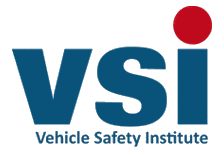CEDATU
Central Database for In-Depth Accident Study
2004 the project CEDATU - Central Database for In-Depth Accident Study has been started as a pilot study funded of the Austrian Road Safety Fund. The aim was to develop an accident database for in-depth analysis of traffic accidents. In this first phase the focus was on accidents with fatal injuries. Now traffic accidents with minor, severe and fatal injuries are investigated.
The data depth in CEDATU is far beyond the data of national statistics. The accidents are simulated three-dimensionally with the accident reconstruction program PC Crash and the course of the accident is determined. Accident parameters such as initial and collision speed of the involved parties, driven trajectories, reaction point, etc. are determined. Since not a single factor generally leads to an accident, factors that contribute to the accident are assigned to each participant and the causal factor is determined from these. Factors can concern human, vehicle, infrastructure, lightning and weather conditions.
For extrapolation on road safety throughout Austria, attributes of national statistics are collected in CEDATU also. These attributes mainly concern the type of accident (single vehicle accident, accidents in longitudinal traffic, etc.), the location of the accident (urban, rural, motorway), the type of traffic (passenger car, truck, pedestrian, etc.) and the injury severity (minor, severe, fatal injured).
In order to be able to prospectively assess the effectiveness of measures to increase traffic safety, the pre-crash phase of all participants is reconstructed in a sufficiently long period of time. Depending on the accident scenario, the velocity-acceleration-time history of the pre-crash phase is reconstructed up to ten seconds before the collision. This makes it possible to assess the effectiveness of safety concepts in advance, i.e. prospectively, and to show their positive or negative effects on avoiding accidents or mitigate the injury severity. Within this assessment vehicle-related developments (e.g. driver assistance systems, automated driving, etc.) and infrastructure-specific measures (e.g. rumble markings, speed restrictions) can be evaluated. In addition to the velocity-acceleration-time histories in the pre-crash phase, the driving trajectories of the involved parties is of importance. Environmental attributes such as visibility limitations, road course, etc. are considered also.
Vehicle Safety Institute
Inffeldgasse 13/6
8010 Graz
AUSTRIA Tel.: +43 (0) 316 / 873 - 30301
Fax: +43 (0) 316 / 873 - 30302
office.vsi@TUGraz.at

